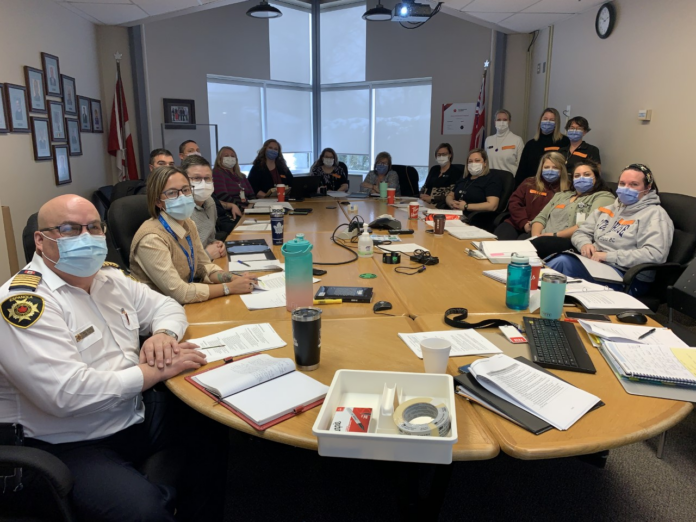Staff at Espanola Regional Hospital & Health Centre wAS tested for their skills in dealing with emergency codes last week.
Last Thursday, staff was joined by Espanola Fire, OPP, EMS and a member of the Patient & Family Advisory Council to work through a tabletop Mock Code Orange involving a school bus and 30 students on board dealing with heavy snow, icy road conditions and a power outage.
There was also a power outage (related to the snowstorm), so an additional code was tested (Code Grey – infrastructure loss).
According to the release, the facilities use several emergency codes to ensure the safety of staff, patients and visitors involving a coordinated response to emergencies with both staff and community partners.
The Mock Code Orange is in response to mass casualties or what is called a CBRNE – chemical, biological, radiological, nuclear or explosives disaster.
The exercise was considered a success.
Espanola Regional Hospital & Health Centre has several emergency codes in place to ensure the safety of patients, families and visitors. These codes support a coordinated response to emergencies by employees, medical staff and volunteers. These mock codes allow the organization to test emergency processes and make certain they are prepared to react to emergencies that impact our health campus, as well as our community.
A Code Orange would be called and responded to when there are mass casualties or a CBRNE (chemical, biological, radiological, nuclear, explosives) disaster, whereby the hospital would be receiving multiple casualties and providing emergency care to those affected by the disaster.
A Code Orange would:
- Shift resources internally so ERHHC would be able to receive and treat multiple victims requiring emergency care.
- Ensure triage and treatment areas are in place to maintain the safety of incoming patients and staff.
- Activate an Emergency Operations Centre to assist in meeting the increased resource demands and designate an Incident Command as a central location to receive important information (internal and external) and ensuring information is shared appropriately.
- Establish a Family Information Support Centre that supports the families of victims and ensures information is flowed to them.
At the end of the day, the mock scenario was considered a success and the work continues to ensure the safety and well-being of staff, patients and partners alike.



